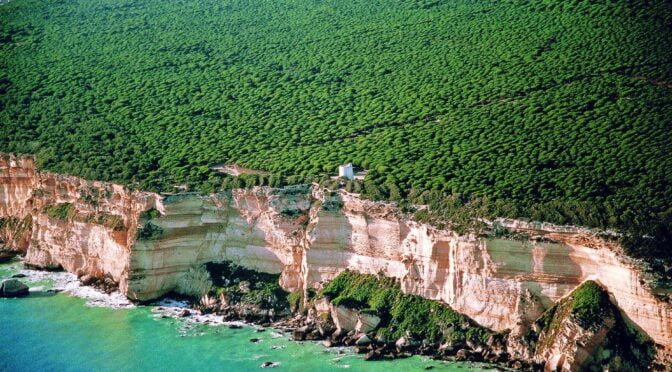- Region: Andalucia
- Province: Málaga
- Declared a Natural Park: 1989. Park surface area: 20,132 hectares
- 1995 designated a UNESCO Biosphere Reserve and the Natural Park inside the biosphere reserve area of 93,930 hectares.
- Biosphere Reserve towns and villages: Alozaina, Casarabonela, El Burgo, Guaro, Istán, Monda, Ojén, Parauta, Ronda, Serrato, Tolox y Yunquera
- 2021 declared a National Park and increased to over 23,000 hectares
In the summer of 2021 The Sierra de las Nieves Natural Park was upgraded to NATIONAL park status. It covers a huge area of approximately 300 square kilometres with its limits ranging from Marbella inland to include the villages of El Burgo, Istan, Monda, Parauta, Ronda, Tolox and across to the Sierra Bermeja close to Estepona.
Points of interest
The Sierra de las Nieves is a limestone massif clothed with evergreen oak trees and also home to the rare Abies Pinsapo or Spanish fir tree. The name “Nieves” refers to the winter snow which was once an important commodity in the area. Snow wells can still be seen on the exposed high areas. The snow would be collected by workers, deposited in the hand built, deep hollows. The snow was compacted, creating ice to be removed later in blocks and delivered the coast on mule or donkey trains to be sold.
The summit of Torrecilla is at 1919m altitude and although close to the Mediterranean coast receives higher precipitation due to an Atlantic influence. Not far from the highest point is also the “deepest” in the form of the G.E.S.M cavern “Los Hoyos del Pilar”. At 1101m deep it is the third deepest such abyss in the World. (Grupo de Exploraciones Subterráneas de Málaga = GESM)
Flora
Combinations of factors such as climate and limestone relief create habitat zones where specialized plants have adapted. The exposed reaches with little soil contain hedgehog broom (Erinacea anthyllis) together with Andalucian gorse (Ulex baeticus), a hedgehog-shaped crucifer; Hormathophylla spinosa, Spiny hare’s-ears (Bupleurum spinosum), the yellow-flowering Echinospartum boissieri, Woolly lavender (Lavandula lanata), Prostrate cherry (Prunus prostrata) and evergreen milk-vetch (Astragalus granatensis subsp andresmolinae).
Mats of common and Phoenician junipers (Juniperus communis / J. phoenicea) grow a little lower, dropping down into specimens of Yew (Taxus baccata) and huge Spanish firs (Abies pinsapo).
Other trees in the park are oak species Lusitanian oak (Quercus faginea subsp. Alpestris), Holm oak (Q. rotundifolia) and Cork oak (Q. suber) with Wild olive, Sweet chestnut, Carob, Aleppo pine, Maritime pine and planted Stone pine. Riparian vegetation contains Ash, Poplar and Willow.
Plants that are endemic to this small area of western Andalucia are Saxifraga bourgeana, Omphalodes commutata, Linaria platycalyx and Ononis reuteri. They occur in Sierra de las Nieves and neighbouring Sierra de Grazalema.
A few images of the Sierra de las Nieves national park
Fauna
The Spanish ibex is the most emblematic of the sierra (Capra pyrenaica hispanica), there are roe deer (Capreolus capreolus) Wild boar, Wild cat and Stone martin and introduced Mouflon.
Birds of prey include Bonelli’s, Booted, Short-toed, and Golden eagle, Scops, Eagle and Tawny owl, Peregrine falcon, Goshawk, Buzzard and Hobby. Amongst the smaller birds are Rock thrush, Blue rock thrush, Ring ouzel, Wryneck, Hawfinch, Ortolan bunting, Wheatear, Black wheatear, Black-eared wheatear and Southern grey shrike. Crossbill, Crested tit, Tree-creepers, Gold crest and Woodpeckers are numerous in the woodlands.
Guided tours and activities close to the Sierra de la Nieves national park
Also in the area
- Ronda la Vieja contains is a plateau on which are remains of a Roman amphitheatre, recent excavation is reveling pillars and benches of the baths area. Once an important town they minted coins here. Also known as “Acinipo” which mean among the vineyards, although now they are arable fields.
- El Tajo, the deep gorge which divides the ever growing town of Ronda is crossed by several bridges. The most famous is the New Bridge built in 1793, it is 98m high and took 42 years to complete. Seldom without bustling crowds of tourists it has a surprising array of birdlife including Red-billed chough, Kestrel, Blue rock thrush and Rock sparrow.
- Near the spa town of Tolox is the Cave of La Tinaja, where pre-historic remains were discovered. There is a small museum in the village.
The Sierra de las Nieves national park
Some nice sceneries in this video showing the protected area
Information/Visitors Centers
Infomation centre Cortes de la Frontera (In the village of Cortes de la Frontera, Calle Jacaranda, 1)
The visitor centre in Cortes de la Frontera acts as a gateway to the nature reserves of Los Alcornocales, Sierra de Grazalema and Sierra de las Nieves.
The centre offers visitors the chance to learn more about the landscapes, nature, history and people so they can enjoy these nature areas to the full.
Tourist Information in Ronda (Paseo de Blas Infante close to the bullring)
The Ronda Tourist Office provides tourist information for visitors to the city of Ronda, the nearby Serrania and the Genal Valley, the province of Malaga and the rest of Andalusia. Its qualified staff will help you discover a territory full of unusual attractions, brimming with history and tradition, with numerous leisure alternatives, events, a comprehensive range of restaurants, accommodation, cultural visits, museums, wine cellars, etc.
“Palace of Mondragón” Museum in Ronda town. Read more here at Ronda Today
Ronda Today
Everything you need to know before you visit Ronda “The city of dreams” in Andalucia. https://www.rondatoday.com/
Visit Cádiz
Planning on visiting Cádiz? Tourist information. Monuments. Hotels. Activities. City guides: https://visitingcadiz.com/
The Caminito del Rey
Find tickets for the Caminito del Rey: https://www.caminodelrey.es/
Wildside Holidays – Spain
Take a trip on the Wildside! Discover the wildlife and nature of Spain, its Natural and National Parks and find the top wildlife, activity and walking holiday companies.
Iberia Nature Forum
Struggling with identifying those bugs and beasties? Why not check out the Iberia nature Forum! https://iberianatureforum.com/




